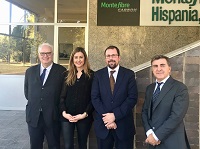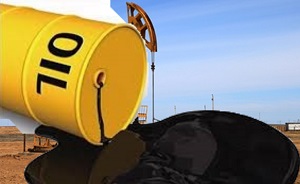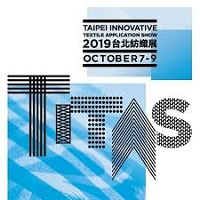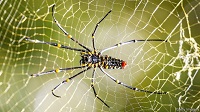Petrochemical PET Polyester Filament 12-10-2019 - Arhive
Petrochemical PET Polyester Filament
-Circular Fashion: Closing clothing’s waste loop
Clothing is one of our most basic necessities, but it is also one of our greatest contributors to environmental waste and pollution. The fashion industry on its own produces 20% of global wastewater and 10% of global carbon emissions. This is more than all international flights and maritime shipping combined. Petrochemical PET Polyester Filament
Beyond the production of clothes and apparel, the way we use and consume an article of clothing over its lifetime also contributes to waste. A study by the University of California at Santa Barbara found that polyester fleece jackets release 1.7 grams of plastic microfibres each time they go into the wash. Overall, the textiles economy is expected to have released over 20 million tonnes of plastic microfibres into the ocean by 2050.

-Spanish government backs Montefibre with EUR 5.6m
From left to right: Galo Gutiérrez, Raúl Blanco, Aitana Hernando, and Alfonso Cirera. © Montefibre Carbon
From left to right: Galo Gutiérrez, Raúl Blanco, Aitana Hernando, and Alfonso Cirera. © Montefibre Carbon Petrochemical PET Polyester Filament
Montefibre Carbon, based in Spain, has received EUR 5.6 million from the Spanish Ministry of Industry, Trade and Tourism as part of the country’s REINDUS (Reindustrialisation and Strengthening of Industrial Competitiveness) initiative to facilitate the company’s transition from producing textile acrylic fibre to polyacrylonitrile (PAN) precursor for conversion to carbon fibre (precursor fibre).

-Brand owners want recycled plastic, but where’s the supply?
As consumer brands pledge aggressive action to use a lot more recycled plastics in their packaging, the big question is: Where will it all come from?
And given the limited, tight supply that will boost prices for recycled plastic as demand goes up, what’s the best way to create more material? Better mechanical recycling? Chemical recycling? Bottle deposits? Petrochemical PET Polyester Filament

-Husky receives approval for refinery rebuild
HUSKY Energy has received the required permit approvals to move forward with its more than US$400m rebuild of its refinery in Superior, Wisconsin, US. Work is to begin immediately. Petrochemical PET Polyester Filament
In April 2018, there was an explosion at the integrated energy company’s Superior Refinery which reportedly injured at least 15 people, one of whom was seriously hurt. According to the US Chemical Safety Board (CSB), the explosion may have been caused by a deteriorated valve. The demolition of equipment damaged in the fire is now largely complete.

-Crude Oil Price Rises on Iranian Oil Explosion; Risk-On Sentiment
Crude oil price (WTI crude) has gained modestly on the back of risk-on sentiment as well as news of an explosion of an Iranian oil tanker.
It is feared that the explosion could reignite tensions in the Middle East, only recently inflamed by the Saudi Aramco attacks. Petrochemical PET Polyester Filament
However, the International Energy Agency has also reduced its global crude oil demand forecasts for 2019 and 2020, which has placed a lid on crude oil price gains for the day.

-TITAS 2019 focuses on sustainability and innovation
Taipei Innovative Textile Application Show (TITAS) 2019 took place from 7-9 October 2019 in Taipei – organised by the Taiwan Textile Federation. The event hosted 423 exhibitors from 12 countries, plus 20 trade organisations representing Taiwan’s range of suppliers and manufacturers.Petrochemical PET Polyester Filament
Key themes at the event were functional applications; sustainability; smart textiles; and intelligent manufacturing.
The event also featured a Solution Provider section, which showed visitors how the use of digital transformation will help to create value for the textile industry, and a Micro Factory area, which demonstrated the concept of automated manufacturing in four stages: design; pre-sew; sewing; and finishing.

-LANXESS Introduces New Compounds for Laser Transmission Welding
Hydrolysis-stabilized PBT achieves Class 5 in USCAR test;
- Halogen-free, flame-retardant polyamide 6 with high tracking resistance;
- PBT with very high transmission.Petrochemical PET Polyester Filament
It enables even very small components with complex geometries to be produced in a cost-efficient and resource-friendly manner, making it part of the growing trend toward the miniaturization of electrical and electronic functions.
This is why LANXESS has developed a wide range of laser-weldable polyamides and polybutylene terephthalates (PBT) Durethan LT and Pocan LT (Laser Transparency) and has recently expanded its range to include three new compounds.

-How spider silk avoids hungry bacteria
Tougher than any fibre made by humans and extraordinarily good at transmitting vibrations to the predators that weave it, spider silk has been a source of inspiration for the development of everything from scaffolding for regenerating bones to bulletproof vests, remote sensors and noise reducers.Petrochemical PET Polyester Filament
Yet one of its most remarkable attributes, its resistance to decay, has received little attention.
Some researchers speculate that spider silk keeps hungry bacteria at bay by being laced with antibiotics.

